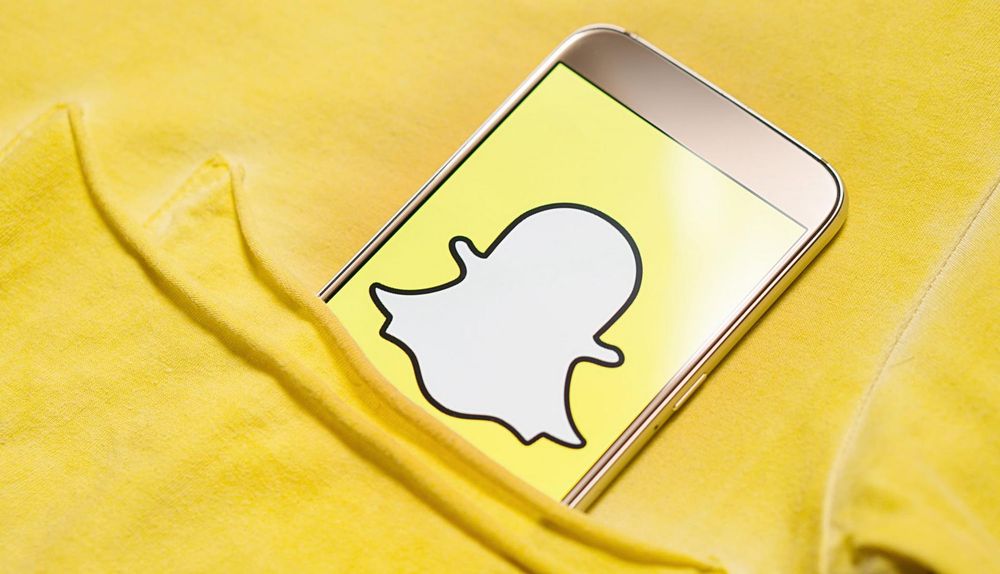REDES SOCIAIS
Segurança no Snapchat: Um guia para pais
O Snapchat abre um mundo de filtros divertidos e coloridos para o seu filho - mas é seguro? Junte-se a nós para descobrir o que mais está escondido dentro desta rede social, conhecer suas funcionalidades e aprender como você pode apoiar a jornada digital do seu filho.

O Snapchat é um aplicativo de mensagens instantâneas que permite aos usuários compartilhar fotos e vídeos que desaparecem após serem visualizados.
Lançado em 2011, o Snapchat se estabeleceu como uma das plataformas de mídia social mais dinâmicas, com impressionantes 414 milhões de usuários diários. O que está por trás de todo o hype? O Snapchat se destaca por seu foco na comunicação visual - amigos trocam fotos e vídeos, conhecidos como snaps, que desaparecem após serem visualizados.
Ao contrário de plataformas que promovem principalmente o consumo passivo de conteúdo, o Snapchat incentiva o compartilhamento ativo entre amigos. É particularmente atraente para usuários mais jovens, pois é menos utilizado por adultos. Isso o torna um playground digital atraente onde crianças e adolescentes podem socializar.
Começando com o Snapchat
Disponível para iOS e Android, o Snapchat oferece acesso gratuito e uma opção premium chamada Snapchat+ com ainda mais recursos. Registrar-se é fácil: um nome, um endereço de e-mail ou número de telefone e uma data de nascimento - é tudo o que é necessário. Adicionar amigos? É fácil, graças à opção de carregar contatos ou procurá-los.
Os termos de serviço do Snapchat afirmam que os usuários devem ter pelo menos 13 anos para criar uma conta. No entanto, não há verificação de idade, permitindo que crianças mais novas também se inscrevam.
Gíria do Snapchat: O que significam esses termos?
No mundo do Snapchat, você frequentemente se depara com expressões específicas relacionadas aos recursos do aplicativo. Aqui, explicamos o que os termos mais comuns do Snapchat realmente significam.
Snapping: Snaps são o núcleo do Snapchat - fotos ou vídeos que os usuários podem aprimorar com filtros criativos e efeitos antes de compartilhá-los com amigos.
Chatting: O Snapchat permite que os usuários também façam chamadas diretas, enviem mensagens de vídeo curtas, textos, fotos e adesivos. Até mesmo chats em grupo com até 16 pessoas são possíveis. Os usuários podem conversar não apenas em seus telefones, mas também via navegador da web através do Snapchat Web.
Snapcode: Pense nele como uma identificação digital do Snapchat. Cada usuário recebe seu próprio código QR, facilitando a adição de amigos. No entanto, isso às vezes pode levar a solicitações de amizade inesperadas.
Histórias do Snapchat: Uma verdadeira inovação do Snapchat - compartilhando imagens e vídeos como Histórias que são visíveis por 24 horas (um recurso posteriormente adotado pelo Instagram). Os usuários podem compartilhar trechos de suas vidas com outros, seja de forma ampla ou apenas com amigos selecionados.
Mapa do Snapchat: Oferece um mapa ao vivo onde os usuários podem ver onde seus amigos estão se divertindo. Cuidado é aconselhado - nem todos que aparecem no mapa são amigos na vida real. Dica: Desative o recurso ou ative o "Modo Fantasma" para manter a localização de seu filho oculta.
Snapstreaks: Indicam quantos dias consecutivos seu filho e um amigo trocaram snaps. É divertido, mas também pode ser estressante, já que alguns adolescentes atribuem grande importância à duração de suas sequências. É importante encontrar um equilíbrio saudável.
Jogos do Snapchat: Jogos multiplayer que podem ser iniciados diretamente no chat. Os participantes da conversa recebem um convite para jogar e podem entrar imediatamente. Também é possível competir contra jogadores selecionados aleatoriamente. Conversar durante o jogo é possível, até mesmo via chat de voz ao vivo, então, novamente, tenha cuidado. Também é importante saber: Não há classificação etária específica para os jogos. Certifique-se de revisar os jogos com seu filho e decidir juntos.
Descobrir: Esta aba é uma cesta colorida cheia de conteúdo, desde notícias até entretenimento e histórias pessoais. Uma olhada por esta janela fornece acesso a um mundo diversificado, mas cuidado: Nem tudo é apropriado para todas as faixas etárias, e anúncios são misturados com as histórias.
Outros termos
Geofiltros: Filtros baseados em localização que o Snapchat fornece para lugares ou eventos específicos.
Memórias: Permitem que os usuários salvem seus Snaps e os vejam novamente mais tarde.
Cameos: GIFs animados personalizados que incluem sua própria selfie e podem ser enviados em chats.
MeuAI: Um chatbot que permite interagir com inteligência artificial diretamente no Snapchat.
Lentes e Filtros: De simples mudanças de cor a efeitos sofisticados de realidade aumentada - há algo para todos.
Loja do Snapchat, Digitalizar, Sons e Destaques: Uma mistura de recursos que vão desde compras e música até uma plataforma para Snaps públicos.
5 Riscos que os pais devem conhecer
1. A ilusão da impermanência
Snapchat muitas vezes parece uma bolha digital - aqui agora e desaparecida no momento seguinte. Isso pode facilmente levar a compartilhar informações pessoais ou sensíveis sem muita reflexão. Mas cuidado: Os destinatários podem tirar capturas de tela desses momentos fugazes e, uma vez compartilhados, o controle é perdido. O Snapchat notifica o remetente sobre essas capturas de tela, mas nesse momento, já é tarde demais.
2. Contatos indesejados
Snapchat é um ótimo lugar para se conectar e se divertir. Mas assim como na vida real, é importante conhecer as pessoas com quem você está convivendo. Crianças e adolescentes podem facilmente conhecer estranhos, colocando-os em risco de interações inadequadas ou até mesmo de assédio online. Uma rápida verificação na lista de amigos ajudará a garantir que apenas rostos familiares sejam permitidos.
3. Tempo de tela e pressão
O colorido mundo de filtros, jogos e Snapstreaks pode rapidamente se tornar uma armadilha de tempo. O recurso Snapstreaks, que mostra há quanto tempo você está compartilhando snaps continuamente com seus amigos, pode criar uma pressão imensa para manter o ritmo. A expectativa de manter uma sequência pode ser muito estressante, especialmente se os adolescentes acharem que uma amizade está em jogo. É importante conversar com seu filho e deixar claro que o número de emojis de chama ao lado de um nome não define uma amizade.
4. Preocupações com privacidade
A questão do Snapchat e privacidade pode ser complicada, especialmente com recursos que compartilham localização. O risco de crianças e adolescentes compartilharem descuidadamente dados sensíveis não deve ser subestimado. Ter uma discussão aberta sobre o que é compartilhado e com quem pode ser um longo caminho para prevenção e segurança.
5. Anúncios
A seção Discover é a vitrine digital do Snapchat, cheia de notícias, histórias e sim, anúncios. Esse conteúdo muitas vezes é formatado de uma maneira que o torna difícil de distinguir do editorial. Peneirar cuidadosamente esse conteúdo protege contra cair em promessas brilhantes de publicidade. Há também o risco de coleta de informações pessoais para publicidade direcionada por meio de questionários e recursos semelhantes.

(Fonte: pressfoto/Freepik)
Dicas para utilização segura
Usar configurações de privacidade
Dedique um tempo para explorar as configurações de privacidade do Snapchat no dispositivo do seu filho juntos. O objetivo é garantir que apenas amigos reais possam enviar snaps ou visualizar histórias - mantendo os convidados indesejados fora. Para crianças menores de 18 anos, essas configurações são pré-definidas por padrão. Não se esqueça: você também pode desativar geofiltros e compartilhamento de localização para aumentar ainda mais a privacidade.
Estabelecer regras de uso
Discuta como o Snapchat deve ser usado: idealmente, interaja apenas com pessoas que você conhece na vida real. Explique por que é importante sempre manter o respeito e por que faz sentido verificar antes de compartilhar conteúdo. Afinal, só porque fotos e vídeos desaparecem do Snapchat não significa que eles realmente sumiram.
Bloquear e denunciar usuários
Mostre ao seu filho como bloquear usuários e denunciar conteúdo preocupante. O Snapchat tem alguns truques na manga para evitar spam ou contato inapropriado. Se algo sério acontecer, cabe a você, como pai, tomar as medidas corretas.
Configurar controles parentais
O Centro da Família do Snapchat oferece uma maneira prática de visualizar a lista de amigos do seu filho sem poder ler as conversas. Isso mantém a privacidade enquanto lhe dá uma ideia de com quem seu filho está interagindo.
- Instale o Snapchat no seu dispositivo dos pais e faça o login.
- Adicione seu filho como amigo simplesmente procurando pelo nome de usuário dele.
- Toque no ícone de engrenagem na visualização do seu perfil para abrir as "Configurações".
- Role até a seção "Controlos de privacidade".
- Toque em "Centro da Família".
- Envie um convite para seu filho, que ele deve confirmar.
- Agora você pode usar o Centro da Família.
Mas esteja ciente: O Centro da Família não é protegido por PIN. Isso significa que seu filho poderia teoricamente alterar as configurações.
Manter a conversa fluindo
A chave é a comunicação aberta. Mostre interesse no mundo do Snapchat do seu filho e discuta tudo o que está acontecendo digitalmente. Isso não apenas construirá confiança, mas também ajudará a identificar riscos potenciais juntos.
Limitar o tempo de tela
Utilizar Ohana: Nosso aplicativo pode ajudar a garantir que seu filho não passe muito tempo no mundo digital e, em vez disso, experimente mais da vida real. Isso promove um equilíbrio saudável e incentiva o tempo offline, que é tão emocionante quanto.
Seu filho está pronto para o Snapchat?
O Snapchat é recomendado para usuários com 13 anos ou mais, uma diretriz que leva em consideração tanto os requisitos legais quanto o desenvolvimento cognitivo das crianças, permitindo que elas naveguem pelo mundo das redes sociais com segurança. Mas é claro que nem todas as crianças são iguais.
A idade não é o único fator - como seu filho lida com os desafios digitais é o verdadeiro teste. Observe como eles se comportam online e na vida real. Essas percepções são inestimáveis para avaliar se seu filho está pronto para o Snapchat.
Nossa recomendação sobre limites de idade: Em geral, é prudente manter-se próximo da idade recomendada de 13 anos. Se possível, adie o início o máximo que puder. E quando der sinal verde para o Snapchat, certifique-se de que seu filho não está desperdiçando horas nele e que está realmente apenas conversando com pessoas que conhece fora do mundo digital. Em última análise, assim como em qualquer rede social, cabe a nós, pais, manter um olhar atento e guiar nossos filhos nesta jornada digital.
Aviso Legal: Os nomes de marcas e imagens usados neste post têm o objetivo de serem informativos e ilustrativos apenas. Todos os direitos autorais, marcas registradas e outros direitos de propriedade intelectual dessas imagens são de propriedade exclusiva de seus respectivos proprietários. Não reivindicamos qualquer propriedade sobre essas imagens, nem o uso delas por nós implica qualquer forma de endosso ou patrocínio pelos respectivos editores. Se você é o proprietário dos direitos autorais de qualquer uma das marcas e imagens usadas e deseja que sejam removidas, entre em contato conosco e faremos isso imediatamente.